Apple Music has become immensely popular since it launched in 2015, and now has over 60 million subscribers worldwide. So how does it stack up against ecommerce giant Amazon's rival premium streaming service in terms of features, music catalog, and cost? Keep reading to find out.
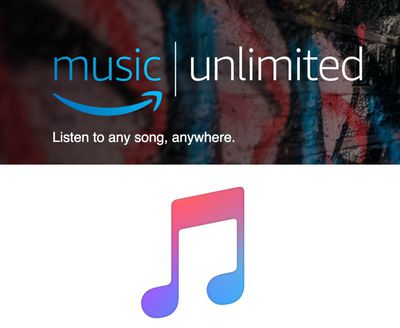
Amazon actually has two primary music services, so before we go any further it's worth explaining the difference. If you have an Amazon Prime membership, you already have access to Amazon Prime Music, as it's bundled in with the service. In fact, Prime Music and Amazon Music Unlimited are similar in many ways, so if you are a Prime member and you're interested in Amazon's standalone streaming service then it's worth getting to know Prime Music first.
Both services share the same interface and apps, and offer similar features like the ability to download songs, albums and playlists for offline listening. The main difference between the two offerings is the number of songs you have access to. Amazon Prime Music has two million songs in its catalog, but paying the extra for Amazon Music Unlimited gets you access to 50 million songs, including the majority of new releases.
Subscriptions and Plans
An individual Apple Music subscription costs $9.99 per month in the United States, with slight price variations in other countries and territories. Membership means you can stream Apple's music catalog, download music and videos for offline listening, and get access to new releases and exclusives, as well as a back catalog of shows broadcast on Apple's Beats 1 radio station.
The price you pay for an individual Amazon Music Unlimited subscription depends. If you're already an Amazon Prime member the streaming music service costs an additional $7.99 per month (or $79 per year). For Prime members who own an Amazon Echo, it's $3.99 per month, but the subscription is tied to just a single device. For everyone else, it's $9.99 per month, which is the same as Apple Music. A subscription gets you ad-free access to Amazon's 50-million song music catalog with offline listening and unlimited skips.
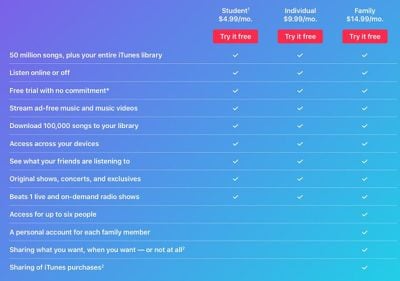
Both Apple Music and Amazon Music Unlimited offer student subscription plans priced at $4.99 per month and both require you to sign up using your educational institution credentials. Both streaming services also offer a family plan costing $14.99 a month which allows up to six people to access the services using a personal account for each family member. Apple Music members can also share iTunes purchases with each other in addition to music catalog content, but all family members are required to use the same credit card for all App Store purchases as part of Apple's Family Sharing program.
Apple Music and Amazon Music Unlimited memberships automatically renew each month, but you can cancel renewal at any time and your subscription will last until the end of your current billing cycle.
Free Trials
Apple Music offers a free three-month trial of its paid service, which converts to a paid membership unless the user cancels before the trial period is over.
Amazon also offers a free trial for its paid music service, but it only lasts 30 days before billing begins.
Libraries and Offline Listening
The Apple Music and Amazon Music Unlimited plans give you access to a huge catalog of content when you sign up. Both services boast catalogs with 50 million songs, but Apple goes the extra mile to secure artist exclusives including new releases, live performances and concert videos.
Apple Music users can download a maximum of 100,000 songs to their library, and thanks to Apple's iCloud Music Library feature these can be synced across any devices signed in to the same Apple ID. Amazon Music Unlimited users also have a 100,000 song upper limit on their library downloads, but these are accessible across a maximum of 10 devices.
Streaming Quality
Starting in June 2021, Apple Music will support Spatial Audio and Lossless Audio, two features that are being provided to Apple Music subscribers at no additional cost. Both of these features will significantly improve the Apple Music listening experience.
Spatial Audio with Dolby Atmos will provide an immersive, multi-dimensional audio experience that allows artists to mix music in a way that makes it sound like the notes are coming from all around you. Apple has had a Spatial Audio feature available for television content, and now it is expanding to Apple Music audio content.
Apple is upgrading its entire music catalog to Lossless Audio with the ALAC (Apple Lossless Audio Codec) that preserves the details in the original audio file. Apple Music subscribers will be able to hear songs exactly as the artists recorded them in the studio.
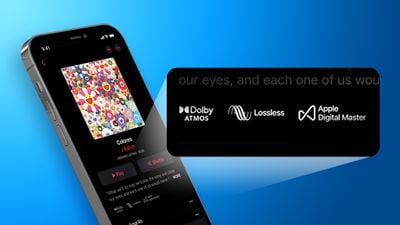
When Lossless Audio launches, 20 million songs will support the codec, with all 75 million songs available in Lossless Audio by the end of 2021.
The standard Lossless tier will start at CD quality, which is 16-bit at 44.1 kHz, and it goes up to 24 bit at 48 kHz. There's also a Hi-Res Lossless tier available at 24 bit 192 kHz, but Hi-Res Lossless requires an external digital-to-analog converter (DAC).
In response to Apple Music's lossless audio announcement, Amazon's high-fidelity streaming service, Amazon Music HD, is now available to Amazon Music Unlimited subscribers at no extra cost. Amazon Music HD previously cost $14.99 a month ($12.99 for Prime members) compared to Amazon Music Unlimited, its most popular service option, which $9.99 a month ($7.99 for Prime members).
If you're not interested in lossless audio, Apple Music streams 256kbps AAC files across the board. Amazon hasn't revealed the bitrate of its library, but the general consensus is that its user audio quality options (low/medium/high) range from 48 Kbps up to and 320 Kbps.
Apart from audiophiles, most listeners probably won't notice much difference between highest-quality streams of the same song, but Amazon Music's option to select the bitrate can come in handy if you're worried about using up your cellular data.
Mobile, Desktop, and Web Apps
The Apple Music catalog is accessed within the Music app, which has a clean white interface and comes pre-installed on every iPhone, iPad and iPod touch, and is available as a separate downloadable app on Android devices.
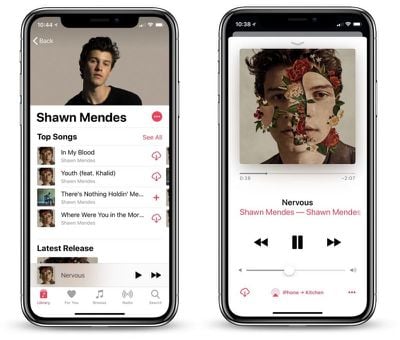
The app is organized into tabs to access your music library, browse the Apple Music catalog, and listen to radio stations, while a For You tab lets you check out suggestions based on your listening preferences.
Amazon's Music app has a contrasting black interface and is also available on both iOS and Android. The Browse section is organized by category and showcases new releases, popular playlists, and song and artist recommendations, while the Recents tab displays music you've recently accessed and My Music is the home of your saved music, organized by category (Playlists, Artists, Albums, Songs, and Genres).
Any music you may have purchased from Amazon on other devices is also automatically available here. Tapping the Alexa icon lets you ask the assistant to play music, pause, play the next or previous song and many other options, while a Search icon also lives at the top right of the screen and in the navigation menu at the bottom to find music to listen to.
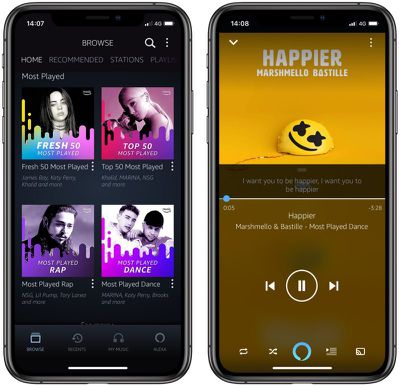
Apple Music uses iCloud Music Library to match any existing music you have in your iTunes library to tracks in the Apple Music catalog, which are then made available on your other devices. Amazon Music also includes a matching service in its PC and Mac apps, but the feature isn't as seamless as Apple's. Amazon used to offer an equivalent music upload service to Amazon Music Storage subscribers, but as of April 2018 the plans are no longer extendable and the storage service is being retired.
Both apps are easy to navigate and include fullscreen media players that showcase album art as you listen. These screens also put add-to-playlist, sharing, song queuing, lyric viewing, and audio device options at your fingertips, with Apple Music having the advantage of 3D Touch support on compatible devices, which can be used to quickly access additional options.
On desktop, Apple Music subscribers can access the service through the iTunes app for Mac and PC. Apple Music in iTunes is largely based on the same format as the mobile app, but it's not quite as pretty. It's also a little less navigable, but it does have Smart Playlists. Smart Playlists can be automatically generated by iTunes based on genre, date added, loved/disliked, and so on, meaning you don't have to manually build playlists yourself if you don't want to.
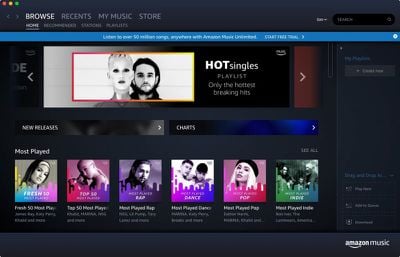
Amazon also offers desktop Music apps for Mac and PC that let you browse the catalog, access your library, and download songs, but the interfaces are terribly basic and the presentation is uninspired by comparison. The Amazon Music web player is no better, but at least the company offers one – Apple Music still lacks an equivalent, but subscribers can use a free third-party web player called Musish.
Discovery Features
When you sign up for Apple Music, Apple asks you to select some of your favorite artists so that the service can get a sense of your tastes. Using this information, Apple Music populates its regularly updated For You section with new releases, daily mixes and playlists to appeal to your preferences. Playlists can take on a style (pop or jazz, for example), a particular artist, or even a particular activity like studying.
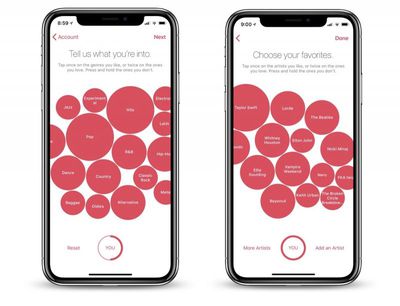
Amazon Music's Home screen is where the service's personalization is centered, but it's minimal at best and the playlists and albums "for You" don't feel very targeted. Things improve a little after you've added some music to your library, listened to some radio stations, and liked/disliked a bunch of songs, but the suggestion accuracy isn't on par with Apple Music's curation, and the algorithms Amazon uses leaves a lot to be desired. Probably the best alternative in this regard is to make sufficient use of the "Customers Also Listened To" button in the media player interface, but it's the same option you'll find on Amazon's online web store and hardly a unique feature befitting a premium streaming service.
Apple Music's non-personalized content lives in a separate Browse tab showcasing trending artists and playlists, top charts, and music videos. Browse is also home to a TV and films section that features Apple-made programming like Carpool Karaoke and artist documentaries.
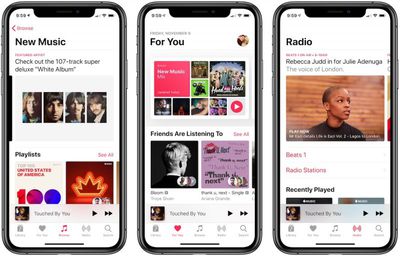
Apple Music's Radio tab features curated music stations tuned to your listening habits as well as Apple's Beats 1 radio station. Beats 1 offers live radio 24 hours a day, and also plays a big part in the platform's music discovery. The Radio tab also has an archive of its most popular radio shows and playlists from years past. Amazon Music's default radio station offering pales by comparison, and unlike Apple Music it doesn't let you you create a station from a song, album, artist, or playlist.
Music Sharing
Apple Music allows you to follow friends who are also subscribers and share playlists with them that you've personally created. Apple Music's For You tab will also show you what your friends are listening to if you've connected to them. Amazon Music Unlimited has no such features, but it does let you share song links via text or over social media.
Speakers and Voice Assistants
As an Apple Music subscriber, you can use Apple's Siri voice assistant on your iOS devices as a personal DJ to control song playback, queue up songs, find song facts, add songs to your library, play your favorite playlists, or even play something new. Getting Amazon Music to work with Siri requires the use of Siri Shortcuts, and even then it isn't guaranteed to work and it lacks many Siri skills exclusive to Apple Music.
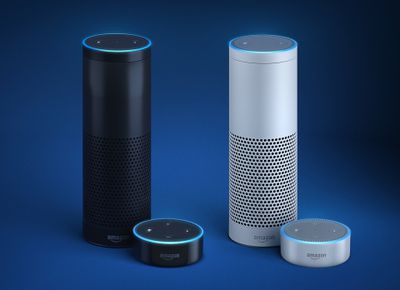
If you own any of Amazon's Echo speakers or an Amazon Fire TV, then you can tap into the company's Alexa voice assistant, which offers many similar DJ skills as Siri does for Apple Music. All Amazon Music Unlimited subscription plans work on Amazon Echo and Fire TV devices. In the U.S. at least, Apple Music can also be set up to stream on Amazon Echo devices, but it's not as seamless and you won't get said Alexa skills.
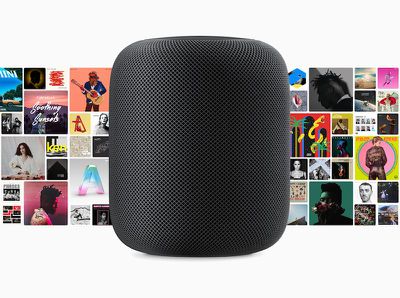
On the other hand, Apple's HomePod speaker is made to be used in conjunction with Apple Music. In fact, one of the main uses for Siri on HomePod is to control your Apple Music collection. There are Siri voice commands for accessing content like playlists, genres, moods, liking or disliking songs, playing more music based on something you've heard, starting a new radio station, and much more. None of these functions will work with an Amazon Music subscription – you can stream audio to HomePod from a device running the Amazon Music app, but that's it.
Listening in the Car
Apple's CarPlay system supports Amazon Music and, of course, Apple Music. If a car doesn't have CarPlay, most newer models have their own entertainment systems, which often make it easy to connect your chosen streaming service. Usually you can do so either direct from a built-in app, over Bluetooth, or via a cable connection. You can also listen to Apple Music and Amazon Music through your phone's or car's speakers with Android Auto.
Apple Music highlights
- Seamless integration with Apple's eco-system
- Beats live radio and archive
- Human curated recommendations
- Social features
- Support for uploading/matching your own music files
- Works natively with HomePod
Amazon Music Unlimited highlights
- Echo speaker integration
- Official web player
- Large music catalog
Summing Up
Amazon Music Unlimited is a decent service on its own, but when compared to Apple Music, its shortcomings become glaring. In terms of interface and apps, Apple Music is far easier on the eye than Amazon Music Unlimited, and Apple's music curation and personalization efforts easily outshine its rival. In addition, Apple Music offers subscribers better social features and far more content, including radio shows, exclusive artist releases, live video performances and concerts.
Of course, let's not forget Amazon Prime Music, which is available to all Prime members at no extra cost. If you just want access to some tunes to help pass the time, it could be an ideal choice. But if you're looking for a dedicated premium streaming service, Apple Music is the one to shoot for.


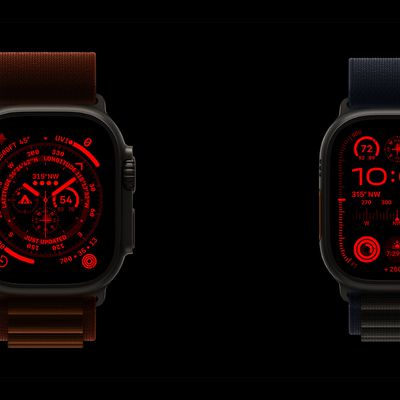



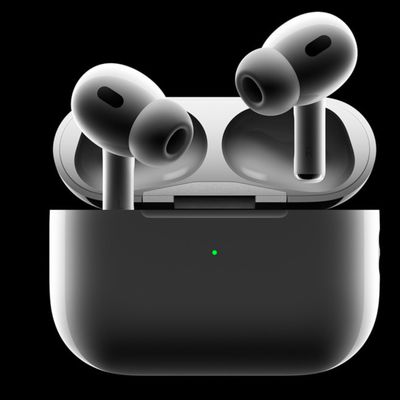













Top Rated Comments
1. My family listens primarily to Country music, and Amazon tends to have a better selection. In particular, you can’t get Garth Brooks on Apple.
2. We have invested in Echo devices, so it just made sense. Sure, NOW we can access Apple Music on them, but at the time I made my selection that wasn’t an option.
We also have several Echo devices. The Home Pod price is ridiculous, so it just made the decision that much easier. I don’t mind paying more for iPhones and Macs (although that’s getting a bit dicier), but that Home Pod was not worth 3X’s the cost of an Echo.
To me, Amazon Unlimited is easily the best. I love the iOS app and the desktop apps for Mac (home) and PC (work).